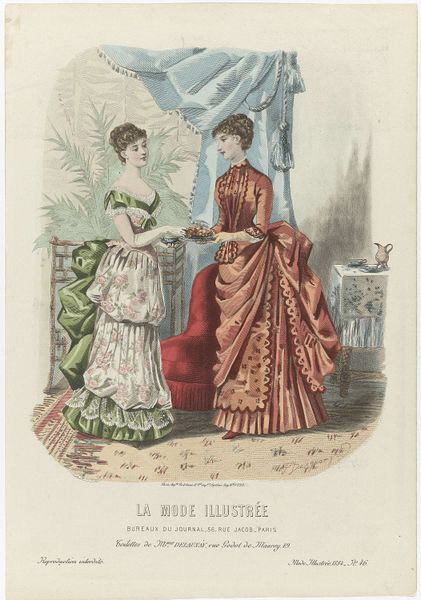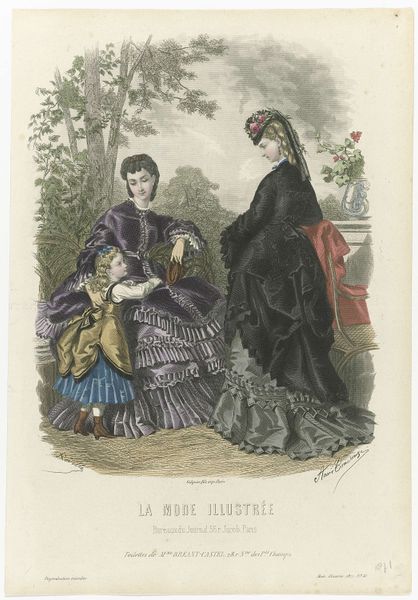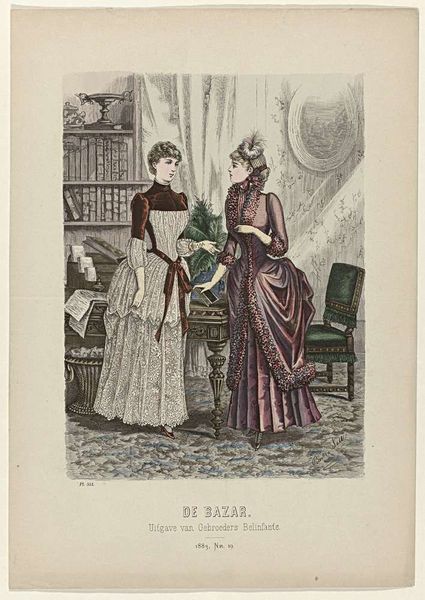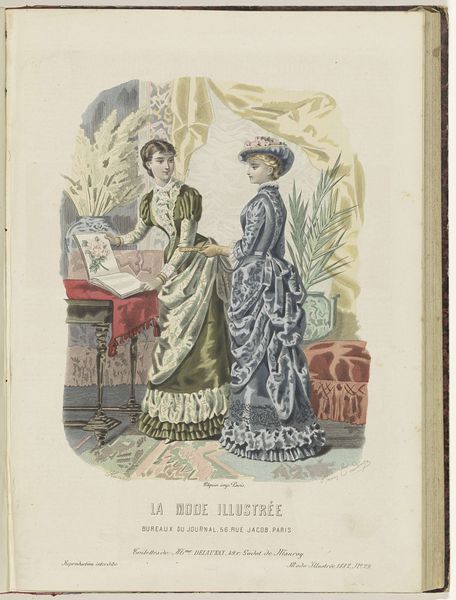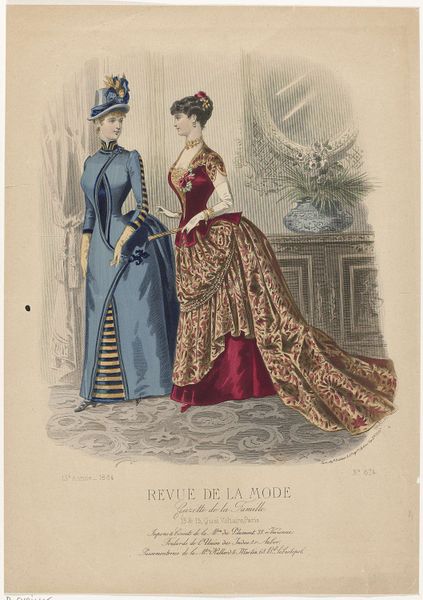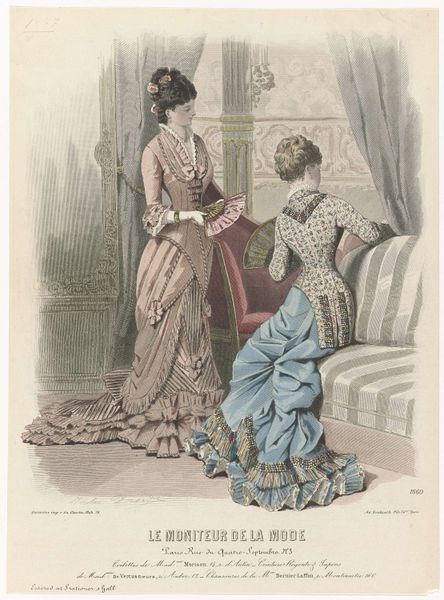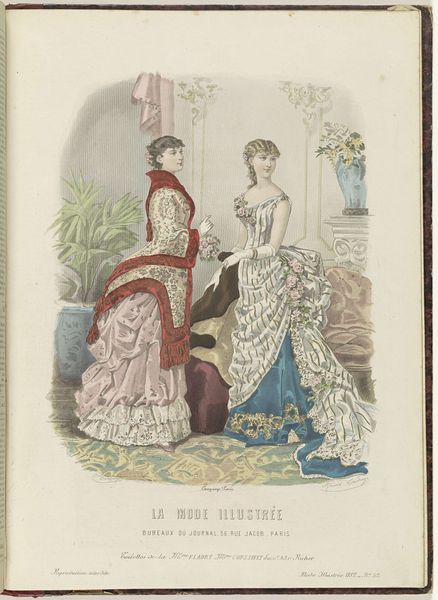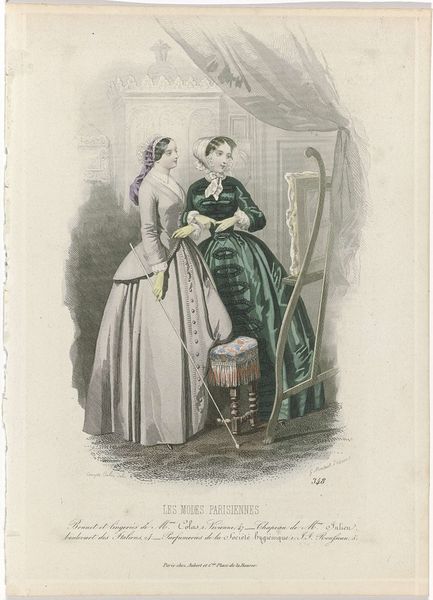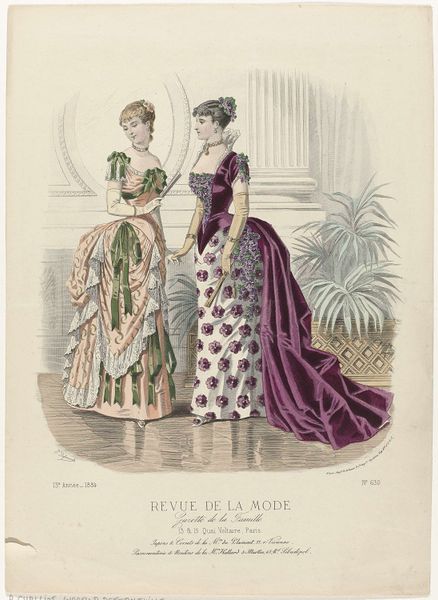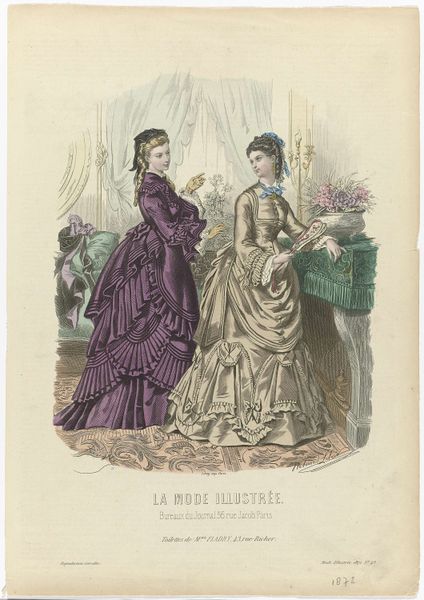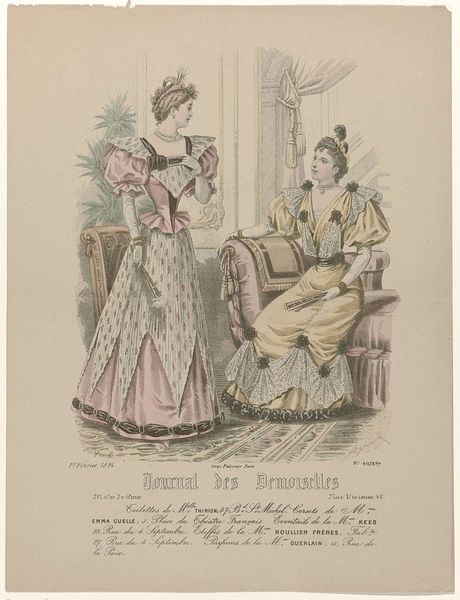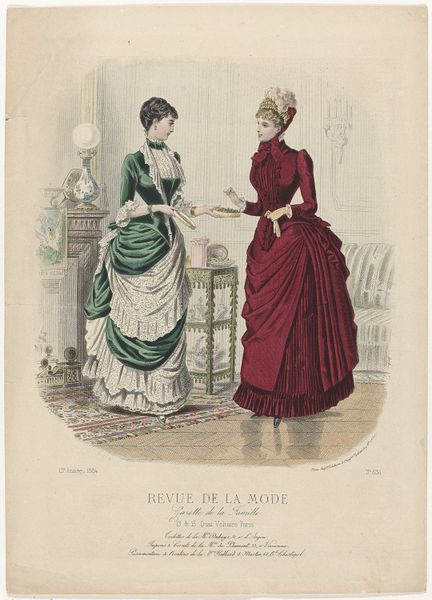
Le Moniteur de la Mode, 1851, No. 272: Toilettes de la Maison Gagelin (...) 1851
0:00
0:00
Dimensions: height 283 mm, width 195 mm
Copyright: Rijks Museum: Open Domain
Editor: This is a print called "Le Moniteur de la Mode, 1851," from Jean-Baptiste Réville, made using lithography. It shows two women in elaborate dresses. It feels…staged. I’m curious, what do you see here? Curator: More than just fashion, these women embody the complicated roles prescribed to women in 19th-century Parisian society. We see the emphasis on appearance, but also, in the woman reading, the subtle nod to intellect. Consider: what possibilities, but also what constraints, did such intricate social performance enforce? Editor: Constraints? I see pretty dresses! Curator: And what does that dress *mean*? Who had access to such displays of wealth? "Le Moniteur de la Mode" wasn’t just about showing dresses, it was also about reinforcing social hierarchies. These weren’t simply garments, but tools for navigating, and perpetuating, a complex web of power. What impact does romanticising these images have today, especially without critical analysis? Editor: I guess, when you put it that way, focusing solely on aesthetics ignores that… privilege? Curator: Precisely. It sidesteps discussions of labor, class, and even the restrictive gender roles. We need to analyze, not just admire. Who is included and excluded from this particular image of "femininity"? Editor: So, these fashion plates aren't just pretty; they're documents of power and inequality. Something to keep in mind… Thank you. Curator: And how vital it is to ask ourselves those questions today. Thank you.
Comments
No comments
Be the first to comment and join the conversation on the ultimate creative platform.

